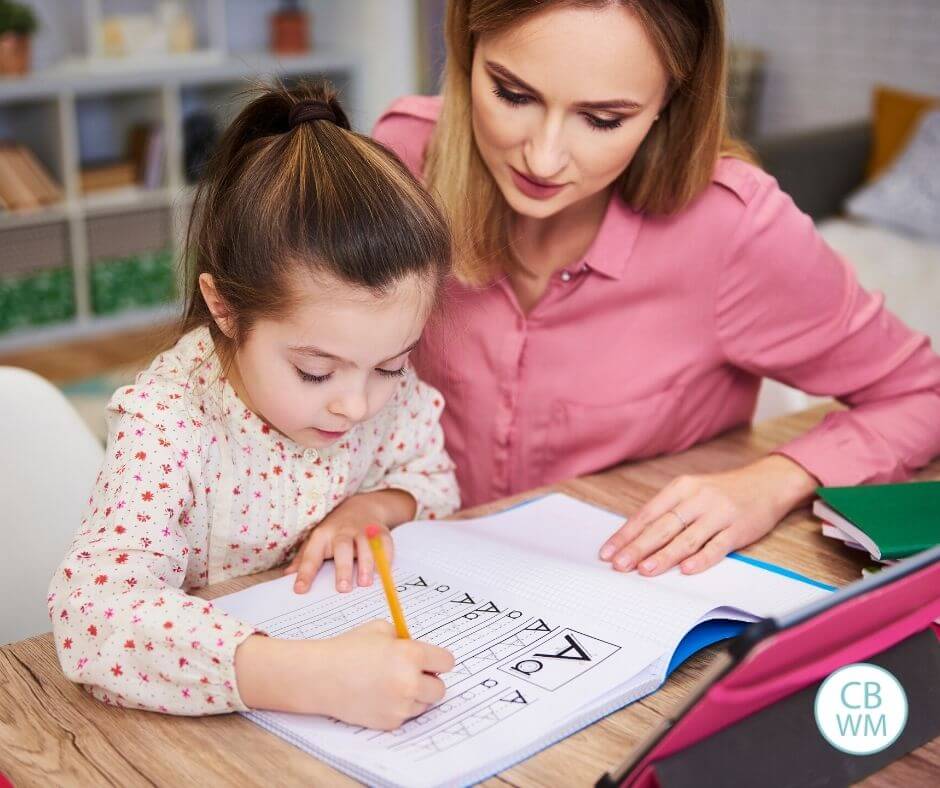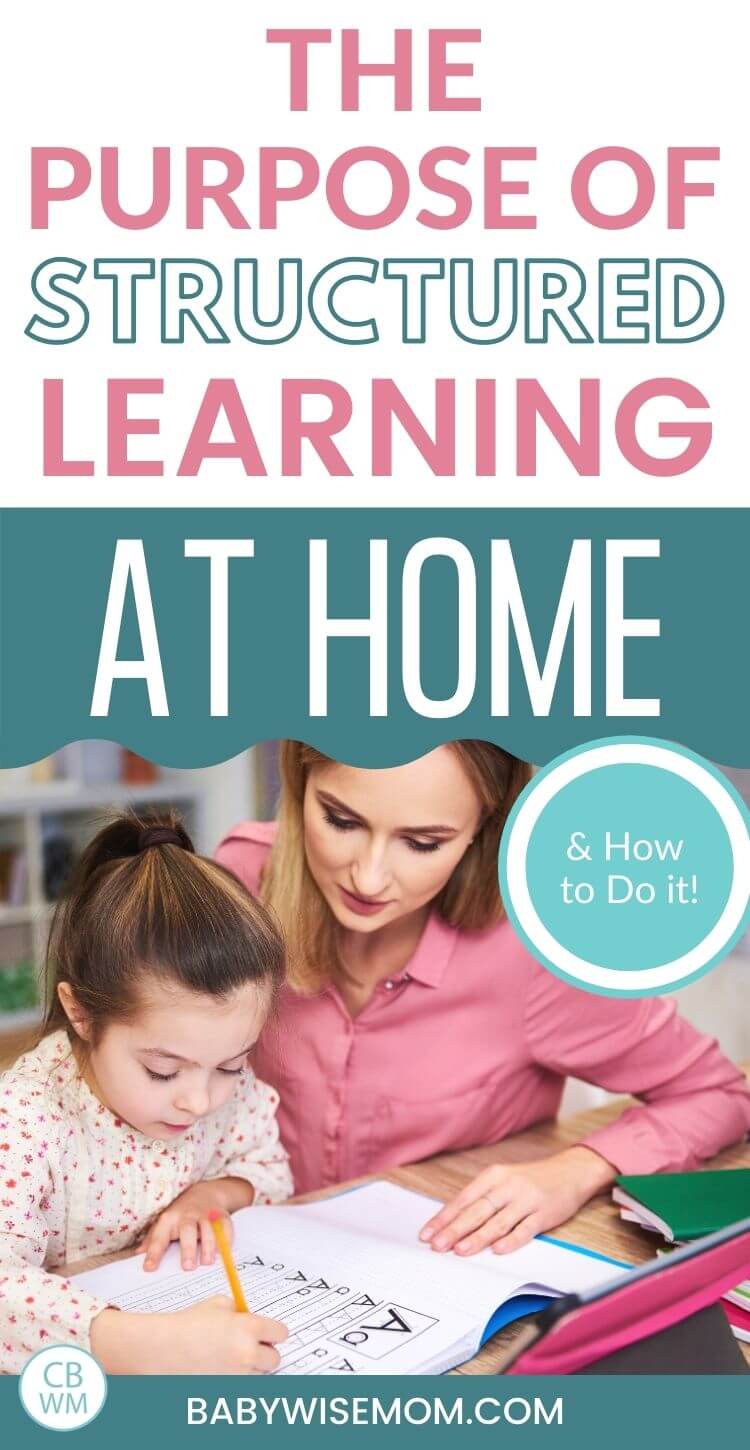You want to do structured learning time at home with your kiddos despite the fact that life teaches so much. Here is why and how to do it.

In this post, guest blogger Becca perfectly explains the purpose for having some structured learning in your day while laying out some simple steps to make it happen. Becca has a great blog full of ideas for structured learning. Visit: http://engagingtoddleractivities.wordpress.com/ to check it out!
~~~~~~~~~~~~~~~~~~~~~~~~~~~~~~~~~~~~~~~~~~~~~~~~~~~~~~~~~~~~~~
How many of us have watched in amazement at what our little ones are capable of learning in an astoundingly short amount of time? Plain and simple, our kids are geniuses. They’re soaking up knowledge all day whether reading at the library or playing in the dirt. They absorb everything and never seem to reach a maximum retention level. I’m guessing you’re all nodding your heads in agreement.
It’s not just mental development either. I’m amazed at how quickly their motor skills progress. Think about it, it wasn’t too long ago they were waking themselves up from that precious nap because somebody whacked them in the nose. Isn’t it impressive how quickly they move from wildly roaming appendages to detailed, fine motor skills? High fives, dialing a phone, digging for candy in your purse, picking their noses, how fast they learn!
Post Contents
Why Do Structured Learning Time at Home
So why structure learning activities into their day when learning is taking place naturally? I think that’s the most prevalent question we hear when it comes to learning activities.
Without direction, their information absorption is haphazard and inefficient. There’s little order to it, making it difficult for them to successfully build upon their knowledge over time. There will come a point where frustration takes hold. As a teacher I saw this repeatedly, students who rely on memorization to succeed. They’ve never learned to process information. They struggle immensely with higher order thinking skills. We can begin that process even with our toddlers.
We teach them how to learn. We don’t leave them to learn on their own. We can provide our little ones with order and direction so that knowledge means something, so they build upon it efficiently, so frustration is held at bay and they can remain engaged when learning whether at age 3, 10 or 20. As in every other area of their lives, we have so much to offer them. And it’s not hard to accomplish.
Pushing that car down the hallway for the millionth time today does include aspects of learning for any 20 month old. BUT, arranging a road with dips and valleys or turns and stop signs gives further direction to their play. They still have a blast, but their gross motor skills, fine motor skills, spatial understanding, and life skills are now being encouraged far more than before. We have offered them a greater opportunity to develop. Sit down with them and engage in active conversation as you play together and you’ve now provided help processing the new experience. They begin to learn directional words like left and right or the purpose of a stop sign, patience while one car waits so another can pass and even social skills. Simply verbalizing all these things brings order to the play, helps their brains process more quickly and as a bonus, adds more fun to their play. In my opinion that’s a learning activity. You’ve just created a learning experience to meet the needs of your child.
We replace simple facts with useful knowledge that can be built upon as they grow. We don’t have to sit our 2 year olds down and fill their brains with every element in the periodic chart. It’s not a race. And as much as we adore showing our kids off, we’re not doing this for bragging rights. Having a one year old that can name and locate all 50 states and their capitols isn’t really necessary (though if my son could do that, I’d certainly provide him plenty of opportunities to show that off). What about knowing their address, their city and state, a basic understanding of the world around them and their place in it?How To Do Structured Learning Time at Home
It all starts with knowing the purpose behind each learning experience. But how do we do this? Is this going to be feasible in our schedules? How do we know what to teach? With pre-toddlers and toddlers, learning activities begin by simply directing their play in a way that will most benefit their needs.
- Create a list of realistic goals for your child’s age and development. To simplify mine, I made categories for different types of learning: spiritual, physical, behavioral and educational. Think about their strengths and weaknesses. Do you notice they need some extra help with their pinching muscles? Incorporate fine motor activities into your little one’s day to encourage practice. Do they need work on patience and remaining still? Organize a craft to complete at the table or have them join you in reading a book on the couch. Look at what they are naturally interested in and work with that. Are they starting to recognize a few letters? Help them organize what they are learning by working through the alphabet and sounds with crafts or games.
- Keep the list short and simple. This helps me remain confident that I am working up my son’s funnel (to use a BW term) rather than jumping up and down sporadically. Keeping it short and sweet helps me to focus and to not become overwhelmed so that I end up giving up before I begin. Having that quick list in the back of my head also helps me to better recognize opportunities that I can capitalize on in the spur of the moment.
- Take the first item on the list and create a learning activity to accomplish that particular goal. Remember our kids don’t need bells and whistles. Well, truthfully they LOVE bells and whistles but you know what I mean. Don’t feel like you have to compete for most creative parent. Your 3 year old isn’t comparing the activities her mom is doing with what the internet moms are posting. The only award we’re seeking is our little one engaged and learning. Sorting stickers or counting goldfish will accomplish both as much as an elaborate homemade game that took hours of prep for mom or dad.
- Plan the activity into your day so that you’ll follow through. It’s so easy to have great intentions yet get distracted by busyness, chores, discipline, meals, errands, work,… I have found that deciding when I will complete the learning activity dramatically increases the likelihood that it will actually be completed.
All of these steps can be completed within 20-30 minutes. That’s a very short amount of time to help us become proactive in our children’s learning. As you make this part of your routine, learning activities will become easier for you to implement. You’ll find creativity strikes while walking through the grocery store or folding laundry and suddenly think of a great way to teach one of the goals on your list. You will also find that it is all definitely worth the effort.
Conclusion
Learning activities don’t hinder a child’s creativity. They don’t keep our kids from enjoying childhood. We’re not shooting for Harvard graduates by the age of ten. We’re simply teaching them to how to learn, a skill that will follow them the rest of their lives.
RELATED POSTS
- How to Keep Kids Engaged During Learning Time
- How To Do A Preschool Homeschool
- Over 51 Activities To Do at Home With Preschoolers
- How To Do a Learning Activity of the Day

